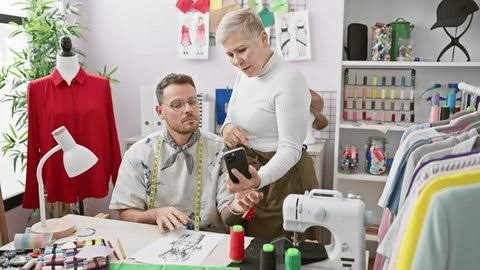Explore the intricacies of fashion videography, focusing on the collaboration between designers and models. Discover the essential roles of each, the importance of clear communication, and how effective direction, location choices, lighting, and editing shape the final product.
Fashion videography is where storytelling meets creativity in the world of fashion. It blends the skills of filmmaking with the imagination of fashion design. Working alongside designers and models is essential in this process as it combines elements that make fashion videos captivating. This comprehensive guide explores how these collaborations work delving into the roles of designers and models the significance of communication and how these partnerships influence the end result.
Recognizing the Contributions of Designers and Models.
Designers play a role, in fashion videography. They breathe life into their vision through clothing and accessories, curating looks that showcase their artistic concepts. In a fashion video project the designers responsibilities go beyond supplying outfits. They need to consider how their designs will be showcased on screen, taking into account factors like lighting, movement and camera angles that can significantly impact how their creations are perceived.
In contrast models serve as the channels for conveying the designers vision. Their role goes beyond simply displaying the clothing; they also need to embody the emotions and themes envisioned by the designer. By using their movements, expressions and interactions with the surroundings models breathe life into the garments. Their skill in capturing the essence of the designs through their performance is crucial for creating an engaging fashion video.
The Importance of Clear Communication
Effective communication plays a role, in the world of fashion videography. It's crucial for everyone involved—designers, models, directors and the production crew—to share a common understanding of the vision, goals and logistical aspects of the project.
Pre-production meetings hold importance as they provide a platform for designers and models to express their expectations and preferences. Directors can also communicate their creative vision and technical needs during these discussions. Designers must convey how they want their designs to be showcased including details about fabric movement and color accuracy. Models should address their comfort levels with the outfits any restrictions on movement and the overall attitude they need to embody.
Additionally regular updates and feedback throughout the production phase play a role in keeping the project on schedule. This ongoing communication helps address issues and ensures that everyones input is valued leading to a smoother production process.
The Directors Role, in Fashion Videography
The role of a director in shaping the outcome of a fashion video is crucial. They are tasked with coordinating how the designers clothing and the models performance come together to form a cohesive visual story. The directors vision influences aspects, such as location choices, props, camera angles and editing style.
To effectively execute their vision the director must have a solid understanding of fashion. They need to know how different styles and designs interact with techniques. For example a dramatic gown may call for camera movements to capture its full splendor while a minimalist outfit might be best showcased through close up shots that emphasize its details. The directors skill in blending these elements plays a role, in the overall impact of the video.
Choosing the Right Locations and Set Design
The selection of the venue and the arrangement of the scene have an impact, on how fashion is showcased in a video. The chosen locations should enhance the clothing and contribute to the overall concept. For example a piece of couture fashion may be best displayed in an opulent and sophisticated setting while streetwear might be more fittingly depicted in an urban backdrop. Additionally the design of the set also plays a role in enriching the storyline. The scenery should support the narrative being conveyed without overshadowing the fashion itself. Its crucial to thoughtfully consider the interaction, between the set and the clothing to ensure that fashion remains the center of attention in the video.
Lighting and Camera Techniques
In fashion videography lighting and camera techniques are crucial. The way light interacts with fabrics and textures can either enhance or detract from the overall look. Designers often have specific preferences for how their creations should be illuminated to accurately showcase their colors and textures.
Camera techniques also play a role. Movement, angles and focus can all affect how the fashion is perceived. Dynamic camera work can highlight the flow and structure of garments while shots may be used to emphasize details. The choice of lens and camera settings can also impact how fashion is presented making it important for the director and cinematographer to collaborate closely with the designer and model.
Editing and Post-Production
In the process of creating a fashion video the stage involves adding the final touches. During this phase the best footage is selected and synchronized with music or voiceovers to ensure that the pacing and flow match the intended story.
An important aspect of post production is color grading. This process can significantly change the appearance and atmosphere of the video impacting how the fashion is perceived. Designers often have specific color palettes in mind and it's crucial to maintain the integrity of these colors through grading.
The finished product should not showcase the designers vision and the models performance. Also align with the artistic vision established by the director. The collaborative nature of fashion videography means that every stage of production is interconnected with each contribution influencing the final outcome.
In Conclusion
Working alongside designers and models in the world of fashion videography is an intricate yet fulfilling journey. It demands communication a grasp of the roles played by each individual and a smooth blend of creativity and technical expertise. From the stages of planning to the final touches in editing every phase necessitates collaboration and an appreciation, for the shared vision. The outcome is a fashion video that not highlights the clothing but also weaves a captivating narrative that captivates audiences and leaves a memorable impact.
